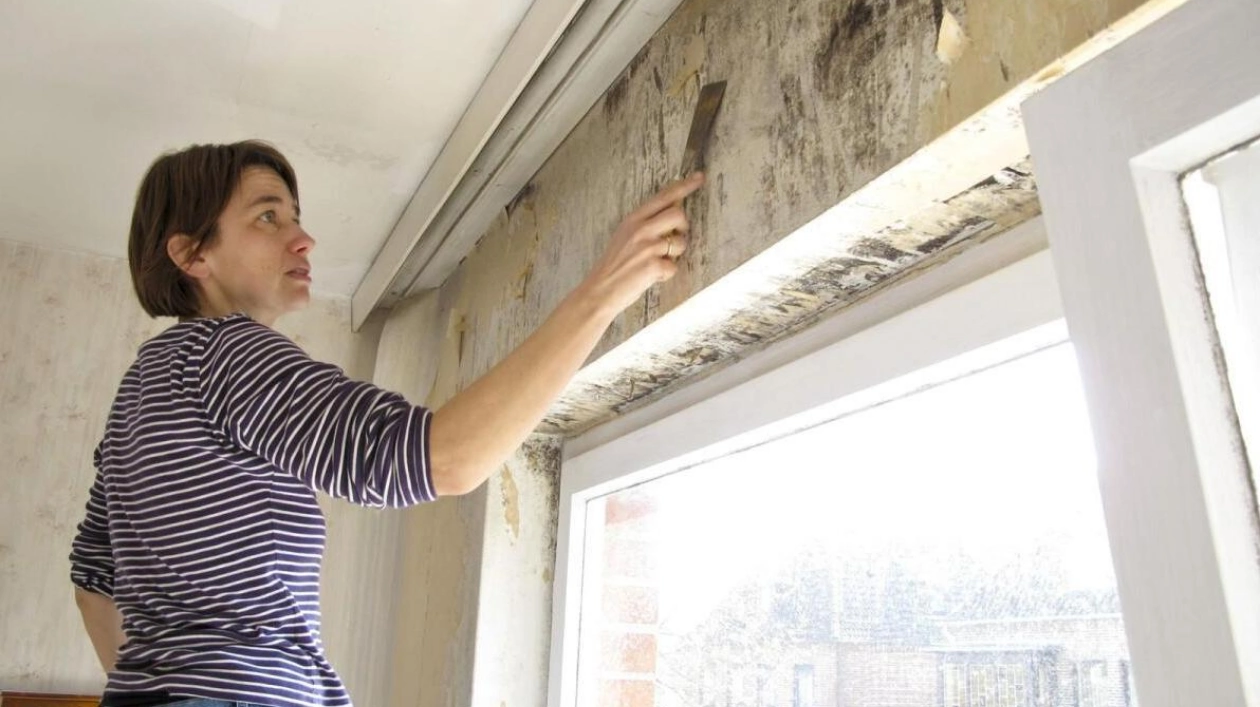South African expat Moodley returned from a two-week trip to find her apartment in Barsha Heights transformed into what she described as 'a scene out of (Netflix sci-fi/horror series) Stranger Things'. 'I came back, and the entire contents of my apartment were covered in mould — no exaggeration. It was a very unfortunate situation, especially since I discovered I am seriously allergic to mould. The mould was thick on surfaces and very much in the air,' said the Art XII resident.
In the UAE, the demand for mould-related services has seen a remarkable surge this year, particularly during summer. Mairi McKerr, operations director of Vivoteq, a mould removal and air purification company in Dubai, reported a staggering 70 per cent increase in enquiries throughout the summer. Several Air Systems cleaning service providers said there has been a notable increase in inquiries and services from residents seeking help combating mould issues. Premium home service company, The Healthy Home, noted a 35 per cent rise in service requests and a 42 per cent jump in mould inspections during July and August.
Moodley said she became very sick from inhaling mould on her first night after vacation and had to stay in a hotel as she struggled to breathe in her house. 'I wasn’t aware that the air conditioner (AC) needed to be left on; I’ve never done that before. After numerous tests and doctor visits, I was prescribed medication and given an inhaler. I've also been advised to undergo a mould blood test.'
Dinesh Ramachandran, technical & SHE (safety, health, and environment) manager at Rentokil Boecker, noted, 'When comparing the number of inquiries we received up until May with those in August, we found that requests for AC duct cleaning and mould remediation increased twofold.' The NADCA-certified air systems cleaning specialist (ASCS) said that the increase in requests for mould solutions and enquiries suggests that turning off ACs completely during summer vacations can damage the system and lead to increased mould growth.
Hisham Jaber, founder of The Healthy Home, stated that mould infestations often result from a combination of factors, including poor ventilation, inadequate maintenance, outdated oil coils, and the common practice of turning off air conditioning units during vacations. Unfortunately, Moodley couldn’t save many of her belongings. 'I had to discard all my bedroom furniture because, although it wasn't visible, the smell was overwhelming. Many personal items, such as shoes, clothes, a wooden laundry basket, and cherished trinkets, were too damaged to clean.'
When Dubai resident Ramola returned from her summer break, she discovered that the AC system had malfunctioned, allowing mould to spread throughout her home. After closer inspection, she noticed even the bathroom mirrors were covered in mould spores. Despite the Indian expat's attempts to tackle the infestation herself, she struggled to remove the stubborn fungi in areas like the kitchen floor, under the fridge, and on the bathroom walls. Eventually, she had to reach out to specialist companies for professional help in resolving the issue.
Humidity can affect everything in a room, often impacting an entire apartment or villa. All surfaces, furniture, ornaments, clothes, shoes, and personal items may require treatment. Mairi McKerr said that using a supermarket product is often enough if mould is on the bathroom tiles. One can also replace the silicon in the sinks and baths. However, resorting to DIY (do-it-yourself) methods will not be effective if the infestation is severe. 'DIY won't fix mould on a gypsum ceiling, or a concrete wall. Mouldy gypsum needs to be cut out and replaced with new. When dealing with a concrete wall or ceiling, simply painting over it, even with anti-fungal paint, is not a solution; you must first kill and remove the mould.'
Dinesh suggested, 'Set the air conditioning to 26°C to 28°C while on holiday. Use the fan-only option with a programmable thermostat, or select AC mode with an auto cut-off feature. The recommended settings help prevent the buildup of humidity and subsequent mould growth while also saving on electricity bills. It's advisable to leave the doors of bedrooms and kitchens open to facilitate air circulation.' 'To prevent mould and ensure a healthy indoor environment, we strongly recommend regular professional deep cleaning of AC systems and, in severe cases, mould remediation,' said Hisham.
Recounting the stress, Moodley said, 'This has been the most difficult experience I’ve had since moving here in the UAE. Losing so much of what I owned is heartbreaking, and the entire ordeal has been financially devastating. I stayed in a hotel until the professionals completed the disinfection on all my belongings. Despite cleaning and disinfecting the visible mould, I still discovered traces behind wall frames, inside boxes, and in cabinets, leaving my health in a deteriorating state. My only option was to move out immediately, but unfortunately, I received no support from my landlord.'
Mairi said, 'An essential equipment everyone should have is a hygrometer, which helps you stay aware of your indoor humidity levels. Place the outdoor hygrometer where it’s visible from indoors so you can easily check outdoor humidity levels.' Expect humidity levels to fluctuate throughout the day, rising particularly at night. If the external humidity is below 55% RH, feel free to open doors and windows for fresh air. However, if it exceeds 55%, keep doors and windows closed. 'The second equipment you should invest in is a dehumidifier, ideally a 30-litre model. Smaller machines struggle to handle the UAE's humidity levels unless the room is very small. When choosing a dehumidifier, look for one that allows you to attach a hose to the back, enabling continuous drainage to a floor drain in the bathroom or kitchen, even when you're away.'
Mould is caused mainly due to: Poor ventilation, Lack of maintenance by property management, Cheap/poor AC cleaning, Old AC coils, not replaced in a timely manner, Humidity, Not leaving AC on while on vacation leading to humidity build-up and mould formation. Mould can be black, white, spotted, or just about any colour. It may appear powdery, cottony, or velvety. If you notice a spot and are unsure if it’s just an old stain or a splotch of dirt, here’s how to tell if it could be a sign of a mould problem: It will have a musty, earthy smell, There’s a nearby source of moisture, with less exposure to light, You see warping, cracking, or peeling of the material it’s growing on, A drop of bleach lightens its colour in a minute or two, Unchecked mould will continue to grow. Dirt and old stains won’t.
If you see or smell mould in your home, it’s a concern. Any type of mould can lead to potential health problems and must be addressed promptly. Mould typically begins as a small patch but can spread rapidly. Touching or inhaling mould spores can cause allergy-like symptoms such as: Runny nose and congestion, Eye irritation, Sneezing, Coughing, Sore throat, Skin rash, Headache, Wheezing, Nasal congestion. Mould exposure can also trigger or worsen asthma symptoms, including: Wheezing, Shortness of breath (dyspnea), Dry cough and chest tightness.






